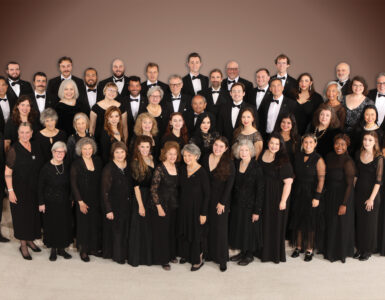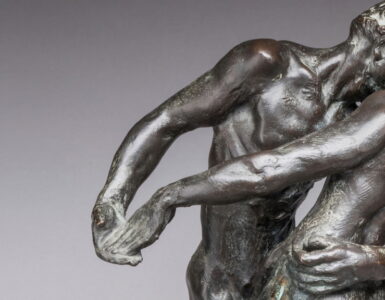
***
Personal style reveals a lot about a person, even as far back as the Middle Ages. Just as today, an haute couture gown demonstrates the social status of the person wearing it and a doctor”™s white coat discloses an individual”™s occupation, in the Middle Ages, the figures that inhabited the illuminated pages of medieval manuscripts could be recognized at a glance by the clothing they wore.
Report by Pauline Adamek
Fashion in the Middle Ages, on display May 31″”August 14, 2011 at the J. Paul Getty Museum, Getty Center, explores how medieval artists used costumes to identify people by profession or to place them in a social hierarchy and at other times used fanciful or idealized images of clothing.
“People in the Middle Ages were highly skilled at reading the meaning of clothing,” says Kristen Collins, associate curator of manuscripts. “The way figures were dressed in manuscripts provided the book”™s reader with clues to their social status, profession or ethnicity.”
Fashion in the Middles Ages demonstrates how manuscript illuminations often reflected the actual styles and fabrics of clothing in the Middle Ages, as well as the economic factors behind them. Scholars were dressed in red robes that carried the additional prestige associated with the high cost of crimson dye, while peasants at work usually wore cheap, undyed wool in shades of brown and gray. Monks, doctors, prostitutes, knights, scholars, queens, and peasants could all be recognized at a glance by their distinctive clothing. Such distinctions offer valuable insights into the world of fashion, allowing us to see what the books”™ makers and owners might have been wearing and why.
While some medieval illuminations provided accurate reflections of the way people lived, other artists provided an edited and somewhat unrealistic representation of dress. In chivalric romances, wealthy patrons sought images of a perfect world, populated with glamorous versions of themselves and even well-dressed peasants.
Since medieval manuscripts were often biblical or historical in nature, certain conventions gradually arose for dressing figures from the past. Costumes for Christ and the apostles were at first based on the classical garments seen in surviving Roman paintings, but were later modeled on fanciful interpretations of the fashions worn in the Middle East and beyond. Included in the exhibition are manuscripts which display early Christian saints clothed in modified versions of the ancient toga, while Jews or Muslims were outfitted in elaborate hats and lavishly embroidered robes to signify their “otherness.”
“Similar to fashion magazines today, manuscripts in this exhibition often present an idealized view of the individuals who are depicted,” adds Collins. “Medieval illuminators used fashion to establish an ideal world that the books”™ patrons might wish to inhabit.”
Fashion in the Middles Ages is co-curated by Kristen Collins, associate curator of manuscripts at the J. Paul Getty Museum, and Margaret Scott, scholar of medieval fashion and author of the accompanying exhibition publication.

***
RELATED PUBLICATION
Fashion in the Middle Ages
By Margaret Scott
From the costly velvets and furs worn by kings to the undyed wools and rough linens of the peasantry, the clothing worn by the various classes in the Middle Ages played an integral role in medieval society. In addition to providing clues to status, profession, or geographic origin, textiles were a crucial element in the economies of many countries and cities.
Much of what is known about medieval fashion is gleaned from the pages of manuscripts, which serve as a rich source of imagery. This volume provides a detailed look at both the actual fabrics and composition of medieval clothing as well as the period”™s attitude toward fashion through an exploration of the illuminated manuscripts in the collection of the J. Paul Getty Museum. The last portion of the book is dedicated to the depiction of clothing in biblical times and the ancient world as seen through a medieval lens. Throughout, excerpts from literary sources of the period help shed light on the perceived role and function of fashion in daily life.
Margaret Scott is the former head of the History of Dress Department at the Courtauld Institute of Art, London, and a world renowned authority on medieval clothing. She is the author of Medieval Clothing and Costumes: Displaying Wealth and Class in Medieval Times (The Rosen Publishing Group, 2004).
J. Paul Getty Museum
112 pages, 5 x 9 inches/ 88 color illustrations
ISBN 978-1-60606-061-2
US $19.95 T [UK £13.95 T]
Available: June 2011
The J. Paul Getty Trust is an international cultural and philanthropic institution devoted to the visual arts that includes the J. Paul Getty Museum, the Getty Research Institute, the Getty Conservation Institute, and the Getty Foundation. The J. Paul Getty Trust and Getty programs serve a varied audience from two locations: the Getty Center in Los Angeles and the Getty Villa in Malibu.
Visiting the Getty Center
The Getty Center is open Tuesday through Friday and Sunday from 10 a.m. to 5:30 p.m., and Saturday from 10 a.m. to 9 p.m. It is closed Monday and major holidays. Admission to the Getty Center is always free. Parking is $15; free after 5pm on Saturdays and for special events. No reservation is required for parking or general admission. Reservations are required for event seating and groups of 15 or more. Please call (310) 440-7300 (English or Spanish) for reservations and information. The TTY line for callers who are deaf or hearing impaired is (310) 440-7305.
Additional information is available here.
Sign up for e-Getty here to receive free monthly highlights of events at the Getty Center and the Getty Villa via e-mail, or visit www.getty.edu for a complete calendar of public program.







